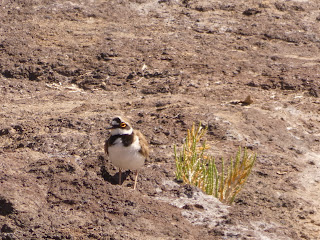Well used road signs
Dwarf Bittern (@Midlandbirder)
Dwarf Bittern
Dwarf Bittern (@Midlandbirder)
It's in the bag !
Ruddy Shelducks with Black-winged Stilts
Fuerteventura Chat
Immature Egyptian Vulture
Adult Egyptian Vulture
Adult Egyptian Vulture
Turtle Dove
Yet another beach
Friendly local
Barbary Ground Squirrel
Common Sandpiper
ID's welcome
Little-ringed Plover
Red-vented Bulbul
We decided our best strategy would be to head to Barranco de Rio Cabras early in the hope the Dwarf Bittern would be out feeding in favourable conditions. We were surprised we were the only birders on site and we duly marched across the barren fields to the Barranco with everything crossed. First scan around the dam wall…….nothing….then I saw the pesky fellow marching across the shallow pools. Amazing ! I was at the perfect angle and once @1stbirdoftheday was on the Bittern I edged to get an improved angle. The bird then stood very still looking further away from us until he took off giving us a superb flight view. The bird had gone into deep cover but I took some images of the location incase we saw anyone else. Dwarf Bitterns are one of the worlds smallest herons and generally occurs in north Africa. This bird was only the fifth to cross the line between Afrotropical & Western Paleararctic bird regions.
The sightings in this location were similar to our previous visit except for a calling African Blue Tit and two Egyptain Vultures. The first was a scruffy first year bird whilst the second was a cracking adult fighting with a Raven.
We then headed to the site where a Tristram's Warbler had been reported in previous weeks. We gave this area a real grilling but we could only find Spectacled Warblers and 4 calling Turtle Doves. It was then back to our original plan to head south for some waders.
Around the beaches of Costa Calma we found a flock of 30 Sandwich Tern, 3 Cory's Shearwater, 4 Kentish Plover, a Sanderling, 2 Whimbrel, Common Sandpiper and the surprise additions were 2 Crows & a flock of Goldfinch up the side of one of the hotels.
On the journey back north we called in at La Pared for some more desert species and Sand Grouse. Whether we timed in wrong or this wasn't still a regular place but there were no Sand Grouse or desert species as hard as we looked. 4 Little Ringed Plover were setting up territory for the spring and the only other birds was a Ringed Plover, Common Sandpiper & a Pied Wagtail.
Our final stop was the Oasis Zoo car park where the best wild bird was Chiffchaff close to the camel rides whilst there was 5 Red-vented Bulbul being very vocal. Total trip species had moved on to a very respectable 59, could we make it 60 ?
On the journey back north we called in at La Pared for some more desert species and Sand Grouse. Whether we timed in wrong or this wasn't still a regular place but there were no Sand Grouse or desert species as hard as we looked. 4 Little Ringed Plover were setting up territory for the spring and the only other birds was a Ringed Plover, Common Sandpiper & a Pied Wagtail.
Our final stop was the Oasis Zoo car park where the best wild bird was Chiffchaff close to the camel rides whilst there was 5 Red-vented Bulbul being very vocal. Total trip species had moved on to a very respectable 59, could we make it 60 ?


















No comments:
Post a Comment